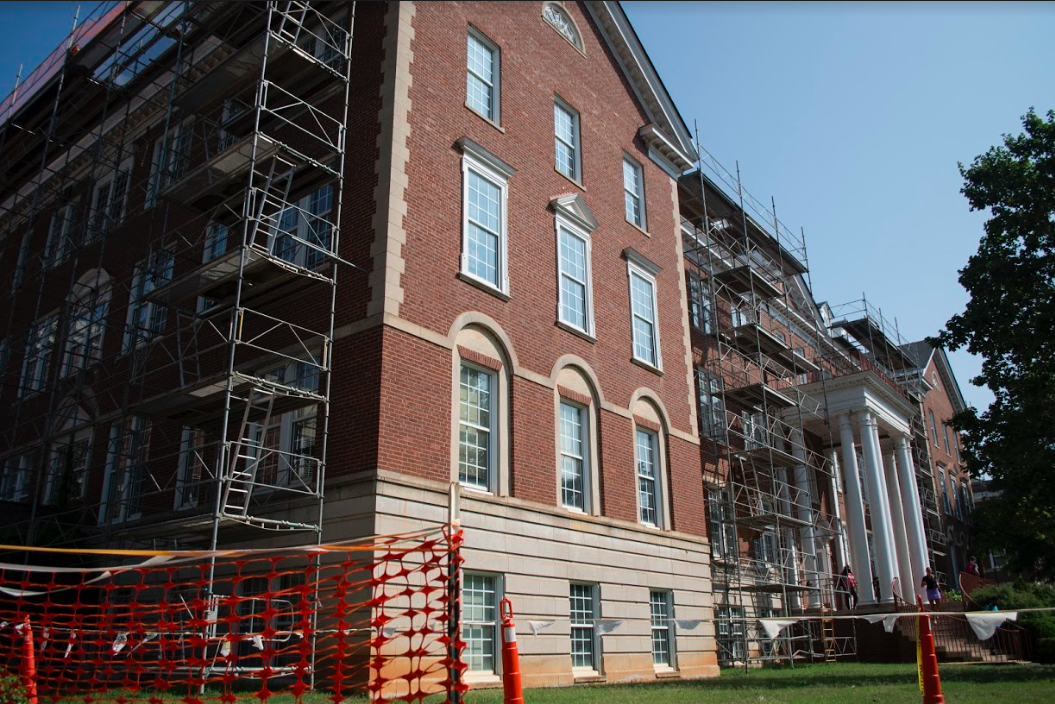Upperclassmen have probably noticed the new signs in the dining areas DiGiorgio and Thomson that came as a result of the switch to Sodexo. Thurmond, which has been under construction since the end of spring 2018 semester, is not finished having asbestos removed. Other buildings, such as Rutledge or Margret Nance, are overdue for renovations. Byrnes is no longer open to classes and was closed Sept. 1 to reopen in the Spring of 2020, according to Vice President of Student Affairs Shelia Higgs Burkhalter.
With all this trouble with the older buildings, one would think the university would invest in what needs repairing. This isn’t just my opinion; students feel that way as well. The money is seemingly going to “buying new things,” said Charleston Park, an elementary education major.
“I feel like [my tuition money] is going to rebranding,” said Ashley Moore, an English major. David Mitchum, a Biology major, said that he feels the tuition money is pretty well balanced between new things on campus and repairing old things but that more money could go towards repairs.
Those are just the issues that we have information on. There are many buildings on campus that have not been formally addressed as a problem but are commonly thought of as problems on campus. Mitchum says that the “elevator in Lee Wicker is really bad” and that “residence halls like Margaret Nance and Lee Wicker need to be fixed.”
Margaret Nance is the oldest still-standing dorm on campus and Lee Wicker, though not as old as Nance, is pretty old. Another all too familiar problem is parking. Jada Sarratt and Ashley Moore, both English majors, said that we need “more parking that is close and convenient.” Residence halls have parking spots for students, but they often fill up extremely fast, causing students to park all the way in the Legion lot, which many students dislike because it is not paved. Also, students who live in Courtyard or Roddey have a long trek to their residence halls from Legion Lot.
Some smaller problems are more seating that is comfortable in DiGiorgio Student Center, suggested by Park, and better bathrooms in Thomson, suggested by Sarratt and Moore. These are all issues that need to be confronted but, for some reason, are not.
As students, most of us do not know how the school budgets their money. It is possible that the new signs have more to do with the fact that we have a new food service this year and is a entirely different budget group than the budget for construction. All four interviewees said they did not feel like they know where our tuition money goes.
To improve this relationship between students and administration they could “send out what they are working on,” said Park. Sarratt suggested telling the student body through Wingspan, the paper, and even through email.
Mitchum said he wouldn’t mind knowing where the money is going but understands they want us to be “focused on our school work rather than stressing over construction.” The administration wants us to succeed as students, not to worry about what is going on in the environment around us.
It is also important to note the nuances that go into college budgeting.
“There is a separate budget for dining services and construction,” said Vice President for Finance and Business Affairs, Justin Oates. Within each budget, there is money that goes to equipment and renovation. The construction budget is only for academic buildings. For construction on buildings such as the West Center or dorms, money comes out of a different budget.
Each year, Winthrop get funds from the state to help pay for different projects. Oates said the university is getting, “3.3 million [dollars] this year.” Last year, $6.3 million went into projects on campus. A lot of this money goes to paying debts for projects that are already finished. 5.8% of the money from last year went into paying back debts from construction projects around campus. The actual amount we spend on projects “fluctuates each year,” said Oates.
The tuition money for room and board from each student is given towards residence halls. Going forward, Winthrop plans on having a set number of projects that they can inform students about.
When it comes to prioritizing projects, Residence Life and Facilities make a list. Health and safety concerns take top priority and will be done first. Carpeting, on the other hand, isn’t a big concern, so it is further down on the list. There is currently a 3 to 5 year plan being implemented to prioritize different projects.
As for whether or not students should know about these projects, Oates believes that it is important for students to be informed. “Without transparency, you get into concerns about how money is spent,” said Oates. To accomplish that transparency, Winthrop could “email in a reactive manner annually or for each semester having one in August and one in January saying what the plan is for the year,” said Oates.
For more information on where your money is being spent, visit the Winthrop Cashier’s Office FAQ online or the Integrated Postsecondary Education Data System at the National Center for Education Statistics online at nces.ed.gov.




